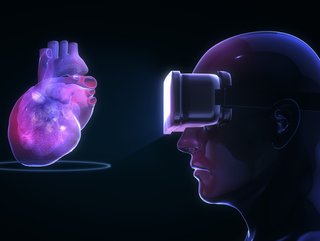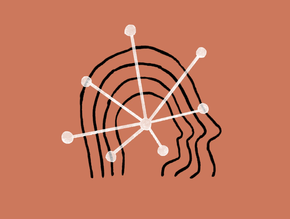How is IoT revolutionising patient healthcare?

IoT devices present healthcare professionals of today with a number of new opportunities to monitor patients, whilst simultaneously enabling patients to monitor themselves. However, the diverse range of wearable IoT devices brings a multitude of advantages and challenges that impact both healthcare providers and their patients.
The Internet of Medical Things (IoMT), often associated with connected devices in healthcare, is one of the fastest-growing sectors in the IoT industry, and by 2026 is expected to reach a market value of US$176bn.
Before IoT, the interaction between patients and doctors was limited to in-person visits, and tele and text communications. Healthcare professionals were unable to make recommendations accordingly as there was no means for doctors or hospitals to monitor so many patients' health continuously.
In order to effectively monitor, control, and protect the security of IoT devices, it is crucial that healthcare professionals have a thorough understanding of how these devices are used. Although there are many examples of IoT in the industry, one of the most popular examples is remote patient monitoring, where IoMT devices have the capability to monitor various aspects of a patient's health from their own home.
How is IoT changing and transforming the healthcare industry?
IoT is without a doubt revolutionising the healthcare industry. With IoT-enabled devices making processes such as remote monitoring possible, it has allowed healthcare professionals to deliver outstanding care to their patients. IoT applications have not only brought advantages to patients, but also to their families, other healthcare professionals, and medical institutions.
Dhaval Shah, Executive Vice President at CitiusTech, states: “IoMT has paved the way for advancements and accelerated consumerism using data from connected medical devices, wearables, and biosensors. Current IoMT devices are also leveraging AI/ML to analyse the data and empower patients to make informed decisions.
“This connected ecosystem of IoMT has helped caregivers in driving interventions, providing personalised treatment, enabling real-time remote monitoring of patients and transition of care outside the hospital. It has been instrumental in increasing patient care and lowering the overall cost of care.”
With the potential to transform the healthcare industry, IoT will not only improve patient care but reduce costs and increase efficiency.
Tech Mahindra’s Jinender Jain, Senior VP & Sales Head of UK & Ireland, explains: “Increased efficiency is one of the most notable and important benefits IoT brings to the healthcare industry. For example, IoT-enabled medical devices can automatically transmit data to electronic health records (EHRs), eliminating the need for manual data entry.
“IoT also helps Life Sciences companies in detecting errors to improve regulatory compliance, and R&D effectiveness besides reducing operating costs. IoT and connected devices have the ability to improve clinical trials through increased patient retention and shorter trial spans.”
Dr Pamela Walker, Healthcare Investment, Growth and Value Creation Expert at Gate One, explains: “IoT is revolutionising healthcare from both a patient experience and operational efficiencies standpoint. IoT and advances in AI are turbocharging a shift in how healthcare is delivered from in-clinic to at home, with novel digital, hybrid options for everything from diagnosis to ongoing treatment management.”
Overcoming the challenges associated with IoT/IoMT
As with any new technological advancement, there will of course be challenges to overcome, especially in today’s digital world where the healthcare sector continues to be a prime target for bad actors and cybercriminals.
The increase in healthcare devices has resulted in the expansion of potential attacks and amplified the number of vulnerable entry points for malicious actors. It has become more challenging for IT teams to gain a comprehensive look at what is happening across the network, meaning cyber attacks have the potential to have a bigger impact.
Spencer Starkey, VP of EMEA at SonicWall says: “With the increased use of IoT devices comes a new set of cybersecurity risks, putting many staff and patients in danger. Cybercriminals are actively targeting the most critical aspects of our society. The ramifications of an attack on the healthcare sector can be disastrous and it’s important to place the utmost amount of time, money and effort in securing them.”
Jain explains: “To overcome this hurdle, healthcare institutions and providers can take a series of steps so that patient information is secure. Firstly, and arguably most importantly, they must implement strong security measures. Secondly, they should educate stakeholders about the benefits of IoT and work to build trust in the technology.”
However, the benefits of IoT in healthcare undeniably outweigh the potential challenges. Remote monitoring, enhanced data accuracy, increased patient engagement, and improved cost-efficiency are all significant benefits, and would not be possible without IoT.
The future seems bright with IoT’s potential
The future of IoT in healthcare is incredibly promising. With the potential to revolutionise the way that healthcare is delivered, the industry will become more personalised, proactive, and efficient.
“We are already seeing the emergence of innovative IoT-powered healthcare solutions, and we expect this trend to continue to accelerate in the years to come,” explains Jain. “This transformative technology is changing the landscape of healthcare, enhancing patient engagement, improving outcomes, and reducing errors.”
Shah highlights: “With the current scale of the IoT-driven medical device ecosystem, the future seems to hold tremendous potential for connected care through IoT devices. As the technology landscape continues to advance with capabilities like gen AI, there are opportunities to enhance patient and physician engagement by using real-time data from IoT devices to provide patient-centric recommendations.”
When we look to the future, IoT will continue to successfully streamline procedures and enhance the patient journey, enabling patients to enjoy increased convenience, greater involvement in their healthcare, and reduced need for physical medical appointments.
For the healthcare providers, access to more precise data, improved diagnostic capabilities, and enhanced time management, will evidently result in better patient care.
Walker concludes: “The devolution of healthcare from in clinic to at home – from doctor to patient – across all channels, will bring wide-reaching benefits, including faster access to more effective care, improved wellness and support, resulting in better patient outcomes.
“There will of course be risks to mitigate as we transform to the future. Patients are not doctors or Nurses, and digital savviness should not be confused with medical expertise. Finding the balance of patient decision-making at home vs via medical professionals in the clinic will undoubtedly be a delicate mission, but one that is critical to establishing a brave new equilibrium of healthcare.”
- Revolutionising Organisations Globally with Machine LearningMachine Learning
- Kheiron Medical Technology can Detect Cancer with AI TestData & Analytics
- The Possible Danger of AI in Healthcare: Study Urges CautionAI Strategy
- Moving Towards 5G and 6G Virtualised Networks with AMDCloud & Infrastructure







